
Webflow Plans and Pricing: Choosing the Right Plan
Understanding Webflow plans and pricing can make or break your online presence. While some platforms may offer flashy features at a hefty cost, Webflow stands out for its user-friendly interface and budget-friendly options.
Whether you’re a beginner building your first site or a seasoned pro looking to scale up, Webflow’s range of plans caters to all needs.
From basic packages perfect for personal projects to advanced solutions tailored for businesses, there’s a plan that fits like a glove.
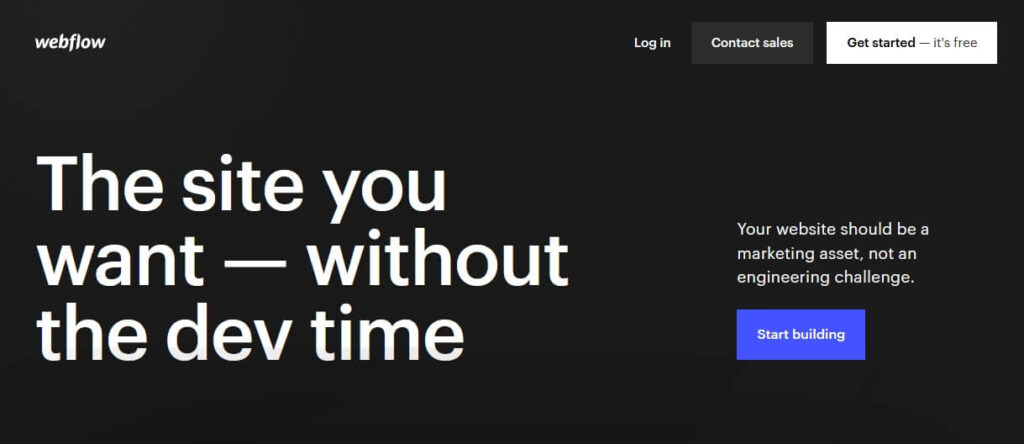
Say goodbye to complicated pricing structures and hello to transparency with Webflow’s straightforward approach.
Key Takeaways
- Consider Your Needs: Before choosing a Webflow plan, assess your website requirements to select the most suitable option.
- Start Small: If you’re new to Webflow, begin with a lower-tier plan and upgrade as your website grows to save costs.
- Utilize Free Resources: Take advantage of Webflow’s free plan or trial periods to test the platform’s features before committing to a paid subscription.
- Factor in Scalability: Evaluate how your website may expand over time to ensure the chosen plan can accommodate future growth without significant price increases.
- Compare Carefully: Thoroughly review the features, limitations, price, and month of each plan to make an informed decision based on your budget and website needs.
- Seek Support: Reach out to Webflow’s customer service for guidance on selecting the best pricing plan tailored to your specific requirements and budget.
What is Webflow Pricing?
Webflow offers a range of pricing plans designed to cater to the diverse needs of individuals and businesses. The cost of using Webflow varies depending on the features and resources included in each plan. It’s important to understand the pricing structure to make an informed decision.
How much does Webflow cost?
Webflow pricing is flexible, with options for both free and paid plans. The free plan allows users to explore the platform’s capabilities, while the paid plans offer additional features and resources at different price points, catering to small businesses, freelancers, and large enterprises.
Best Hosting Solutions
- Best High Speed Web Hosting by Hostinger
- Low Cost Web Hosting Solution for Everyone by NameCheap
- Next-Gen VPS Hosting Solutions by Liquid Web
- Exclusive Website hosting by Inmotion Hosting
Best Cloud Hosting Solutions
Start Your eCommerce Online Store
Shopify eCommerce Online Store Builder for just $1
Marketing Tools
SEO Tools
#1 All in One SEO Tool – Semrush
Reasons to Use Webflow
Easy Web Design
Webflow offers various plans suitable for different needs, allowing users to create visually stunning websites without any coding skills for a month.
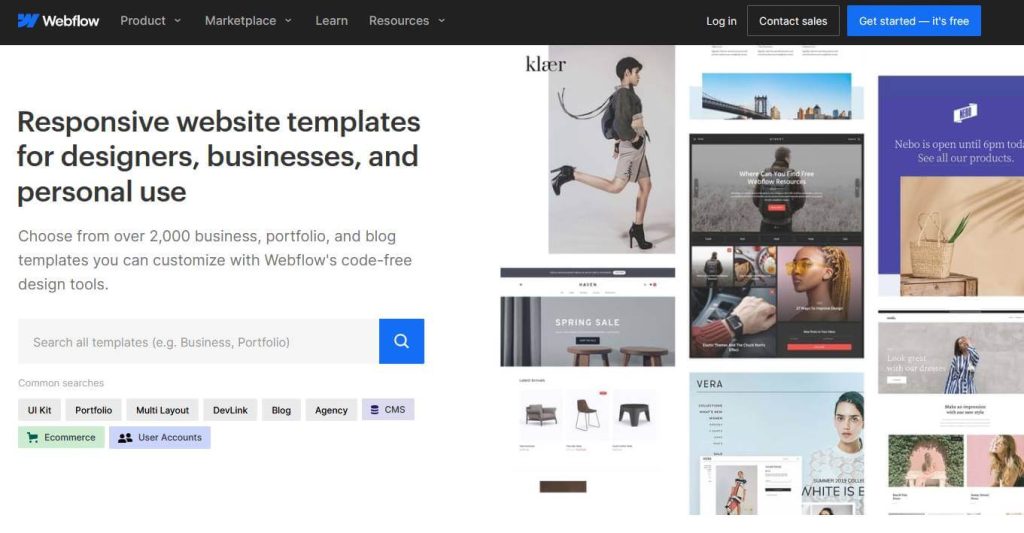
The platform’s drag-and-drop interface makes it simple to design professional-looking websites effortlessly.
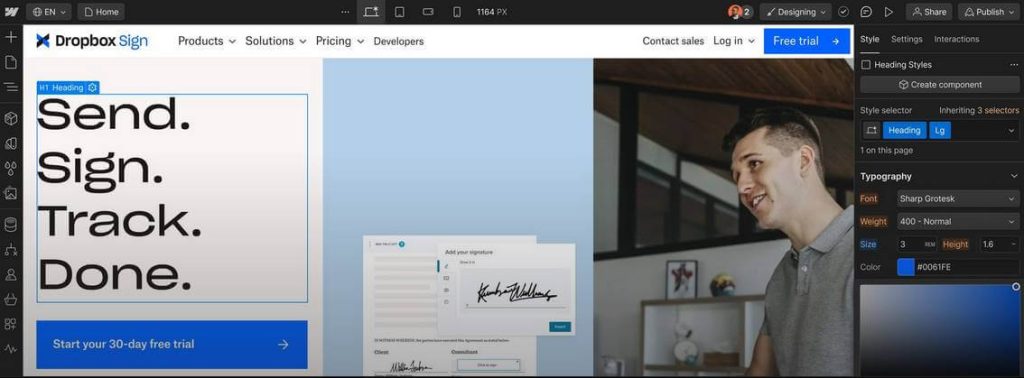
Users can choose from a wide range of templates or start from scratch with a blank canvas.
- No coding skills required
- Drag-and-drop interface for easy design
- A wide selection of templates is available
SEO Optimization Features
One of the standout features of Webflow is its built-in SEO optimization tools that help improve website visibility on search engines like Google.
Users can easily customize meta titles, descriptions, and URLs to enhance their site’s ranking potential.
Webflow provides features like automatic sitemaps and responsive designs that contribute to better search engine optimization.
- Customizable meta tags for SEO enhancement
- Automatic sitemap generation for improved indexing
- Responsive designs for better user experience
Cost-effective Pricing Plans
Webflow offers a variety of pricing plans tailored to different user requirements, making it an affordable option for individuals and businesses alike.
From free accounts with basic features to advanced plans with eCommerce capabilities, users can select the plan that best fits their needs and budget.
Moreover, the flexible pricing structure allows users to upgrade or downgrade their plans as needed.
- Free plan available with basic features
- Affordable options for individuals and businesses
Understanding Webflow Plans and Pricing
Different Plans
Webflow offers a variety of plans to cater to different needs. Whether you are an individual looking to create a personal website or a business aiming for a professional online presence, there is a plan suited for you.
The basic plan provides essential features, while the business plan offers more advanced tools and functionalities.
Webflow’s plans are designed to be flexible, allowing users to choose based on their requirements and budget.
For instance, if you need eCommerce capabilities, the eCommerce plan would be ideal. Each plan comes with its own set of features tailored to specific user needs.
- Basic Plan
- Business Plan
- eCommerce Plan
Transparent Pricing Structure
One of the key benefits of using Webflow is its transparent pricing structure.
Users can easily see what each plan includes and decide which one aligns best with their goals without any hidden costs or surprises along the way.
This transparency allows individuals and businesses alike to make informed decisions about which plan suits them best.
The pricing structure clearly outlines what features come with each plan so that users know exactly what they are paying for upfront.
This straightforward approach helps build trust between Webflow and its customers by providing clarity in terms of services offered at each price point.
- No Hidden Costs
- Clear Feature Breakdown
- Informed Decision Making
Monthly and Annual Payment Options Available
To provide added flexibility, Webflow offers both monthly and annual payment options for its plans.
Users can choose the monthly payment frequency that works best for them based on their budgeting preferences or project timelines.
Opting for an annual payment may also lead to cost savings compared to paying every month.
By offering these two payment options, Webflow caters to users with varying financial situations or project durations each month.
Some individuals might prefer monthly payments for short-term projects, while others could benefit from annual payments if they have long-term goals in mind.
Comparing Webflow Site Plans
Basic Plan for Personal Websites
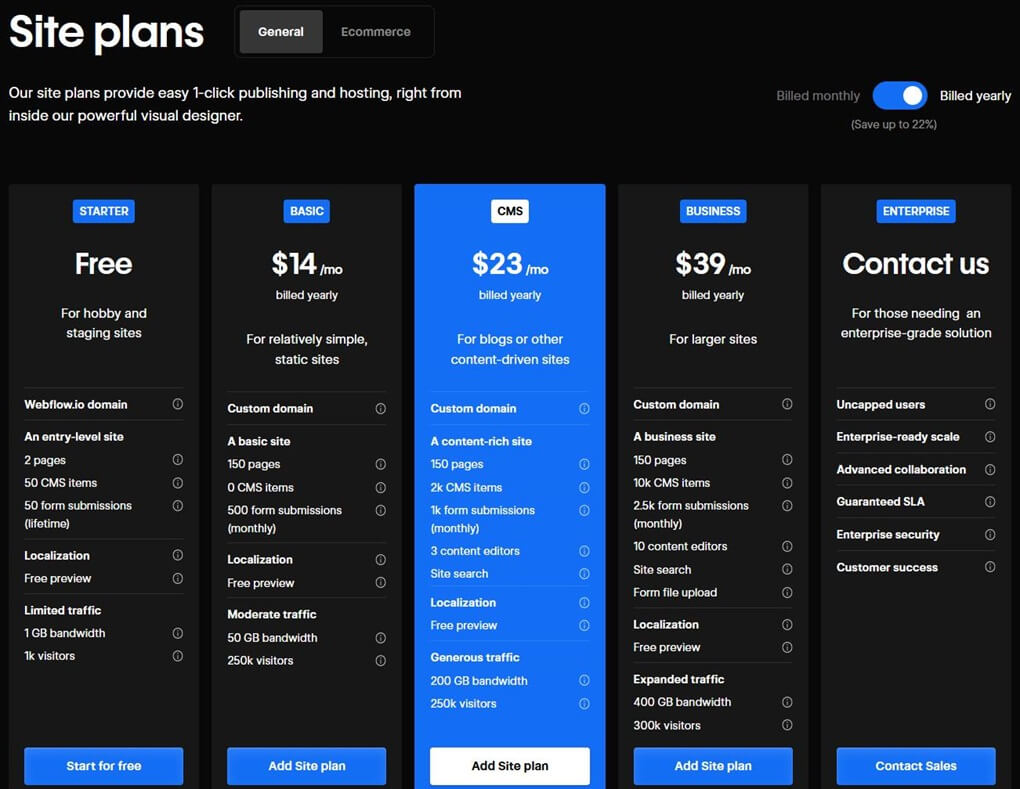
The Basic plan is perfect for personal websites. It offers essential features like hosting and the ability to connect your domain. This plan is ideal if you’re just starting and need a simple, cost-effective solution.
With the Basic plan, you can create an entire site with ease using Webflow’s intuitive drag-and-drop builder.
The main difference between this plan and others lies in its limited features tailored more toward individuals or small projects.
- Pros:
- Affordable pricing
- Easy-to-use interface
- Ideal for beginners
- Cons:
- Limited advanced functionalities
- Not suitable for complex websites
CMS Plan for Content-Driven Sites
The CMS plan caters to content-driven sites that require frequent updates or blogs. This plan allows you to manage dynamic content more efficiently through collections and dynamic pages.
Unlike the Basic plan, the CMS option enables users to update their site regularly without needing extensive coding knowledge.
If you aim to maintain a blog or news section on your website, this might be the right choice.
- Pros:
- Dynamic content management
- Streamlined updates
- Suitable for blogs and news websites
- Cons:
- Higher pricing than the Basic plan
- May not be necessary if your site doesn’t have frequent updates
Webflow Site plans Pricing
Monthly Payment
- Starter: Free
- Basic: $18 /month
- CMS: $29 /month
- Business: $49 /month
- Enterprise: Need to contact the Webflow team
Yearly Payment (Save up to 22%)
- Starter: Free
- Basic: $14 /month
- CMS: $23/month
- Business: $39 /month
- Enterprise: Need to contact the Webflow team
Business Plan for eCommerce Websites
The Business plan is designed specifically for e-commerce websites looking to sell products online effectively.
With advanced e-commerce functionalities such as custom checkouts and inventory management, this option provides everything needed to run a successful online store smoothly.
If you are planning on creating an online shop with various products, payment gateways, and shipping options, then the Business plan would be most beneficial.
- Advanced e-commerce tools included.
- Customizable checkout process.
- Inventory tracking capabilities.
Webflow eCommerce plans Pricing
Monthly Payment
- Standard: $42 /month
- Plus: $84 /month
- Advanced: $235 /month
Yearly Payment (Save up to 30%)
- Standard: $29 /month
- Plus: $74 /month
- Advanced: $212 /month
Evaluating Webflow Workspace Plans
Individual Plan
The Individual plan offered by Webflow is tailored for freelancers and solo designers. It provides a comprehensive set of tools to create, design, and launch websites independently.
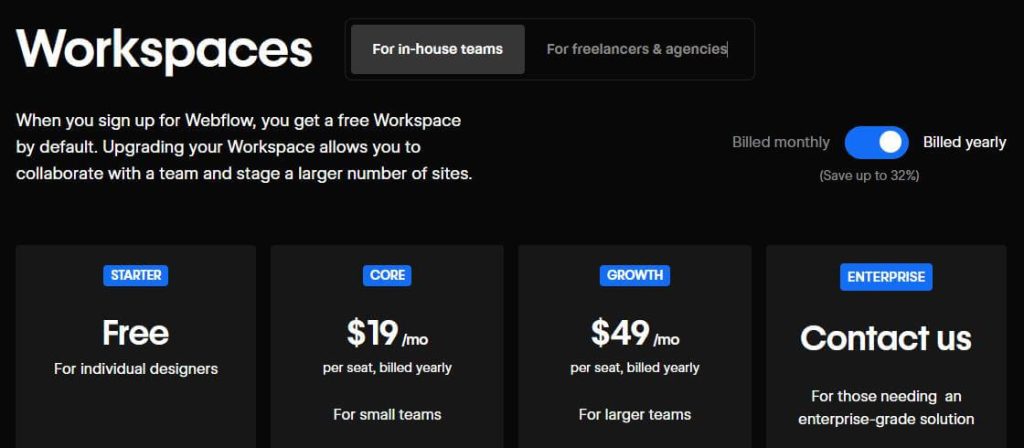
This plan is ideal for those who work on projects alone or want to have full control over their website development process.
The Individual plan offers features like custom domain support, enhanced site security, and access to premium templates.
Pros:
- Suitable for freelancers
- Full control over website development
Cons:
- Limited collaboration features
- May not be cost-effective for larger teams
In House Team Plan
The Team plan caters to businesses that require collaboration among in-house team members and multiple users working on web design projects simultaneously.
With this plan, team members can work together seamlessly on various aspects of website creation within the same platform.
The Team plan enhances workflow efficiency by allowing real-time editing and feedback sharing among team members.
- Key Information:
- Facilitates collaboration
- Multiple user accounts are available
- Examples:
- Design agencies with multiple designers
- Marketing teams working on website content updates
Enterprise Plan
For organizations undertaking large-scale web design projects, the Enterprise plan from Webflow offers advanced solutions tailored to meet specific business needs.
This plan provides extensive customization options, dedicated support services, and enhanced security features essential for handling complex web development projects effectively.
Exploring Webflow Enterprise Plan Pricing
Customized Pricing
Webflow’s Enterprise plan offers customized pricing tailored to specific requirements. This means that businesses can negotiate a price based on their unique needs and monthly usage.
For example, if a company requires additional features or higher levels of support, they can discuss these details with the Webflow team to create a personalized plan.
Webflow’s customized pricing ensures that businesses only pay for the services they need each month, avoiding unnecessary costs for features they won’t use.
This flexibility allows companies to scale their subscription according to their growth and changing demands over time.
Dedicated Support and Advanced Features
One of the key benefits of Webflow’s Enterprise plan is the dedicated support provided to clients.
This includes priority assistance from customer service representatives who are well-versed in handling complex issues and custom solutions.
Enterprise users gain access to advanced features not available in standard plans, such as enhanced security protocols, advanced analytics tools, and exclusive design capabilities.
The dedicated support ensures that businesses receive prompt assistance whenever they encounter challenges or require guidance on optimizing their web presence.
Moreover, having access to advanced features empowers companies to create more sophisticated websites with cutting-edge functionalities.
Scalable Solution for Big Businesses
For large corporations looking for a scalable solution, Webflow’s Enterprise plan offers the ideal platform.
With its ability to handle high traffic volumes, extensive content management needs, and intricate design requirements, this plan caters specifically to big businesses’ demands.
The scalability of the Enterprise plan allows organizations to expand their online operations without facing limitations related to performance or functionality.
Whether it’s accommodating increased website visitors or integrating complex e-commerce systems, Webflow provides a robust solution designed for seamless scalability.
Webflow Plans for In-house Teams Pricing
Monthly Payment
- Starter: Free
- Core: $28/mo per seat, billed monthly
- Growth: $60 /mo per seat, billed monthly
- Enterprise: Need to contact the Webflow team
Yearly Payment
- Starter: Free
- Core: $19/mo per seat, billed monthly
- Growth: $49/mo per seat, billed monthly
- Enterprise: Need to contact the Webflow team
Webflow For freelancers & agencies plans pricing
Monthly Payment
- Starter: Free
- Freelancer $24 /mo per seat, billed monthly
- Agency $42 /mo per seat, billed monthly
Yearly Payment
- Starter: Free
- Freelancer $16 /mo per seat, billed monthly
- Agency $35 /mo per seat, billed monthly
Does Webflow Have a Free Plan?
Free Plan Overview
Webflow offers a free plan that comes with limited features. This option is ideal for beginners or small projects looking to explore the platform without any financial commitment.
The free plan allows users to create up to two projects, which can be a great starting point for those who are new to website building.
For individuals or businesses seeking more functionality, upgrade options are available within Webflow’s pricing structure.
By upgrading their plan, users can access additional features such as custom domain hosting, increased project limits, advanced design customization tools, and eCommerce capabilities.
These upgrades cater to users with varying needs and project requirements.
Pros and Cons of Webflow’s Free Plan
Pros:
- Ideal for beginners or small projects
- Allows users to explore the platform without cost
- Great way to learn about web design
Cons:
- Limited features compared to paid plans
- Restrictions on the number of projects that can be created
- Advanced functionalities not available in the free plan
Upgrade Options Available
Users on the free plan have the flexibility to choose from various upgrade options based on their requirements.
These upgrades offer enhanced features tailored towards different user needs. For example:
- Personal Plan: Suited for freelancers or individuals looking for basic website functionalities.
- In-House Team Plan: Designed for collaboration among team members working on multiple projects.
- Business Plan: Geared towards businesses needing advanced eCommerce solutions and client management tools.
Each upgrade tier unlocks additional benefits such as increased project limits, priority support, white-labeling options, code export capabilities, and more comprehensive analytics tools.
Calculating the Cost of Webflow Plans
Consider Features
When evaluating Webflow plans and pricing, start by listing the features you need.
Basic plans may lack advanced functionalities like e-commerce tools or site search, which are available in higher-tier subscriptions.
For instance, if you’re running an online store, ensure your chosen plan supports essential eCommerce features such as inventory management and secure checkout options.
It’s crucial to match your requirements with the plan that offers them without unnecessary extras. If you only need a simple portfolio website, opting for a basic plan can save costs without paying for advanced capabilities you won’t use.
Compare Prices
Before settling on a Webflow subscription, compare prices across different plans to find the best fit for your budget and needs.
Take note of any discounts offered for annual billing compared to monthly payments.
For example, while monthly payments might seem more manageable initially, annual subscriptions often come with significant cost savings in the long run.
By comparing prices between plans such as Standard vs. Plus vs Advanced tiers, you can determine which one aligns best with both your financial resources and feature requirements.
Factor in Additional Costs
In addition to base subscription fees, remember to factor in extra expenses like custom domains or third-party integrations when calculating Webflow costs.
Custom domains allow you to have a unique web address instead of using a generic subdomain provided by Webflow.
Moreover, if you intend to integrate external services like email marketing platforms or analytics tools into your website, consider any associated costs involved in these add-ons.
Choosing the Right Webflow Pricing Plan for Your Needs
Assess Requirements
When deciding on Webflow plans and pricing, it’s crucial to evaluate your website needs.
Consider the features essential for your site, such as eCommerce capabilities or custom code integration.
Think about the number of team members who will require access and the level of support needed.
Determining a budget is equally important. Reflect on how much you can allocate monthly for your website expenses.
Factor in any potential growth or upgrades you foresee in the future that might impact costs. Aligning your budget with long-term goals ensures sustainability without overspending unnecessarily.
Select Plan Alignment
Once you have a clear picture of your business needs and financial constraints, choose a plan that best fits these criteria.
Opt for a plan that offers specific access levels tailored to your requirements, whether it’s basic features for small teams or advanced functionalities for larger enterprises.
Consider selecting a plan that allows room for growth, accommodating an increasing number of team members as your business expands.
Look at options like additional seats available at an extra cost to ensure scalability without compromising on functionality.
Is Investing in Webflow Worth It?
Value of Time Saved
When deciding whether to invest in Webflow plans and pricing, it’s crucial to assess your specific needs. Consider the value of time saved by using Webflow’s user-friendly interface.
With its drag-and-drop features, creating a website becomes more efficient.
Using Webflow can save you hours compared to traditional coding methods. The platform streamlines the design process, allowing you to focus on other aspects of your business or project.
This time-saving aspect is invaluable for busy professionals looking to maximize productivity.
- Saves time with an intuitive interface
- Focus on other tasks while designing
Return on Investment
Another factor to consider when contemplating investing in Webflow plans and pricing is the potential return on investment (ROI).
Improved website performance can lead to increased traffic, conversions, and ultimately revenue growth. Evaluate how much your website’s performance impacts your goals.
You’ve now uncovered the ins and outs of Webflow plans and pricing, delving into the details to find the perfect fit for your needs.
From understanding the different plan tiers to calculating costs and selecting the ideal option, you’re equipped to make an informed decision.
Remember, the right plan is like finding a tailored suit – it should fit you perfectly without any extra frills.
So, choose wisely based on what aligns best with your website goals and budget. Now go ahead, dive into Webflow’s offerings, and kickstart your online presence with confidence!
Frequently Asked Questions
Can I try Webflow for free before purchasing a plan?
Yes, Webflow offers a free plan that allows you to build and publish websites without any cost. It’s a great way to explore the platform’s features and see if it aligns with your needs before committing to a paid plan.
What factors should I consider when choosing a Webflow pricing plan?
Consider aspects like the number of projects you’ll be working on, the level of customization needed, and whether you require advanced features like e-commerce functionality. Assessing these factors will help you select the most suitable plan for your requirements.
Are there any hidden costs associated with Webflow plans?
Webflow is transparent about its pricing structure, so there are no hidden costs involved. However, additional expenses may arise if you opt for premium integrations or services outside of what is included in your chosen plan.
How does Webflow pricing compare to other website-building platforms?
While Webflow may seem slightly more expensive than some competitors initially, it’s robust design capabilities and comprehensive feature set often justify the investment. The value derived from using Webflow can outweigh any price disparities when considering quality and flexibility.
Can I upgrade or downgrade my Webflow subscription at any time?
Yes, you have the flexibility to upgrade or downgrade your Webflow subscription at any point based on your evolving needs. This adaptability ensures that you can adjust your plan according to changes in project requirements or budget constraints.
Conclusion
In conclusion, selecting the right Webflow plan is a pivotal decision for individuals and businesses alike, as it directly influences their website’s functionality, scalability, and budget.
Each plan offers a distinct set of features tailored to different needs and goals, ranging from personal projects to robust e-commerce platforms.
Understanding the nuances of each plan, such as the number of projects allowed, access to advanced interactions, and eCommerce capabilities, empowers users to make informed decisions aligning with their specific requirements.
Moreover, considering factors like budget constraints and growth potential ensures that users invest in a plan that not only meets their current needs but also accommodates future expansion seamlessly.
